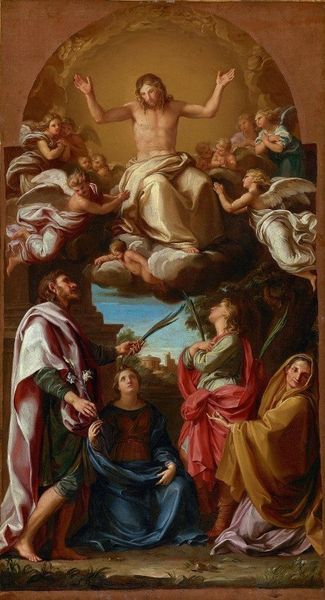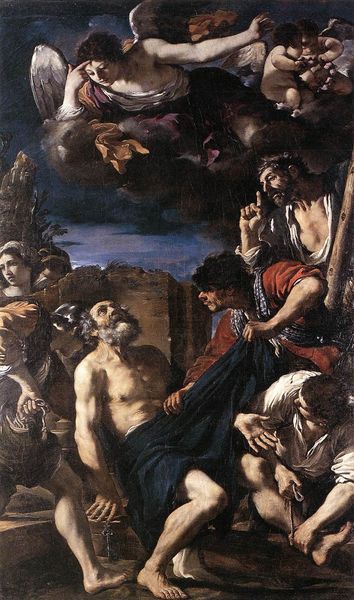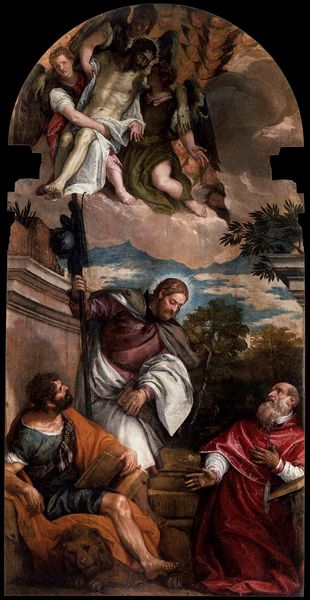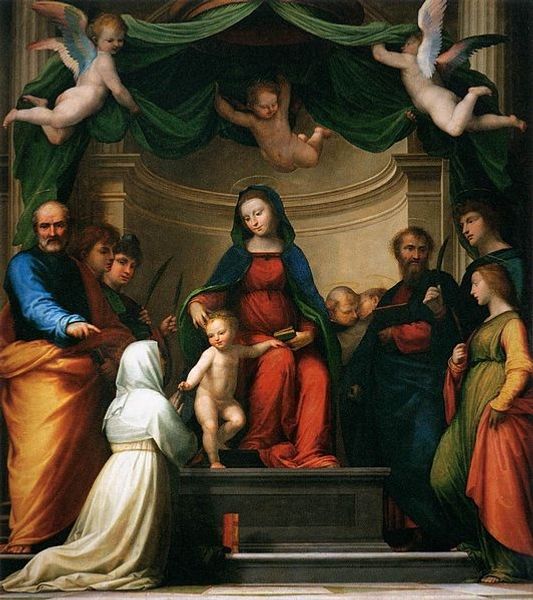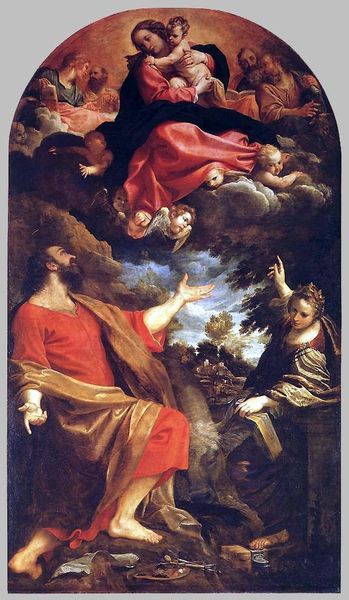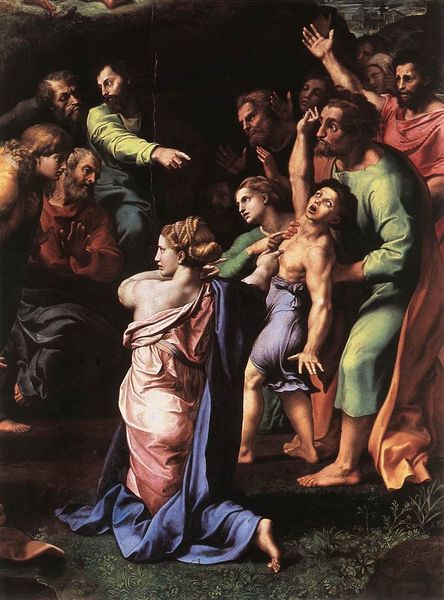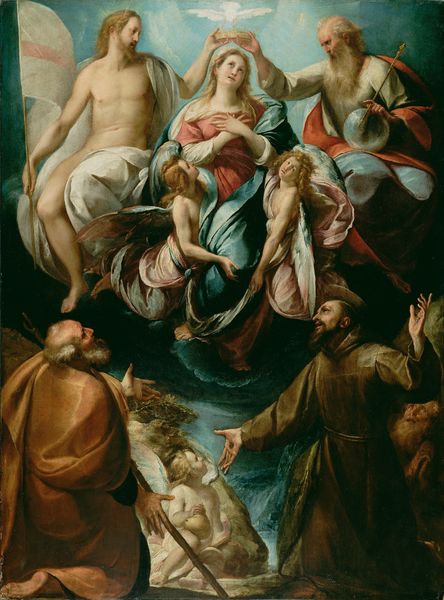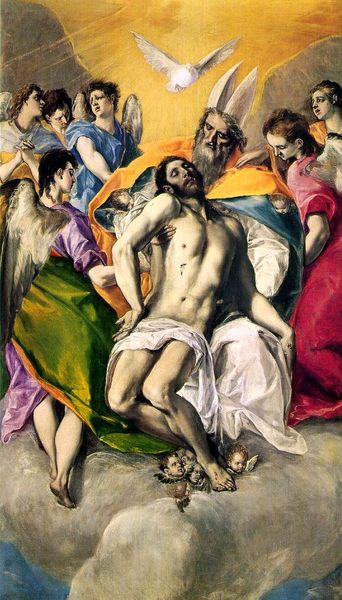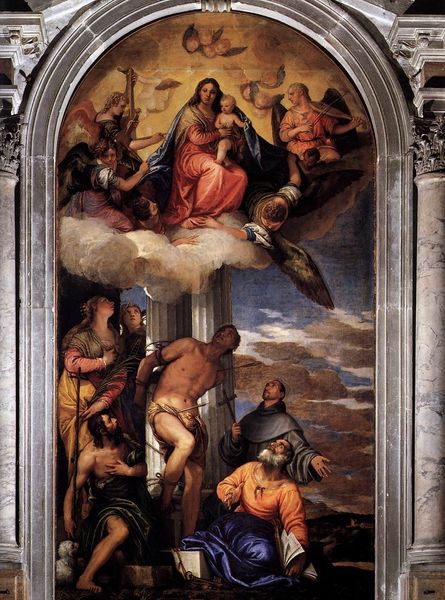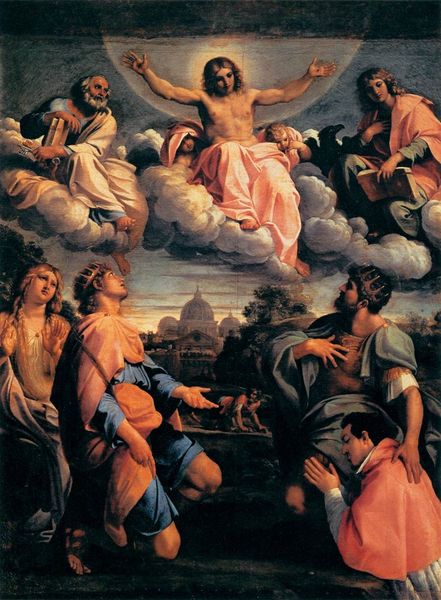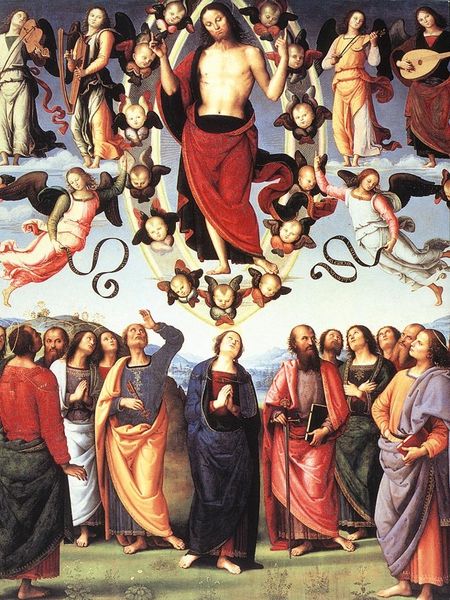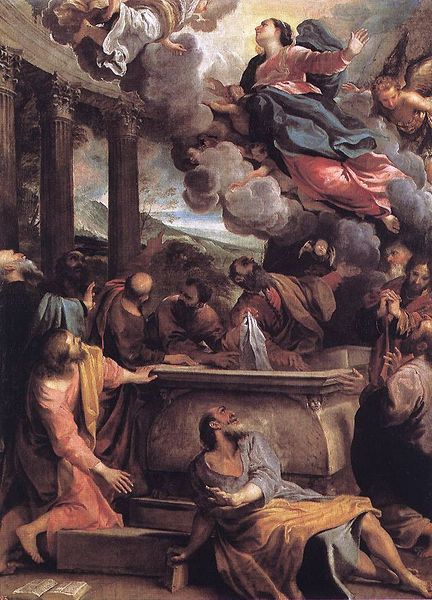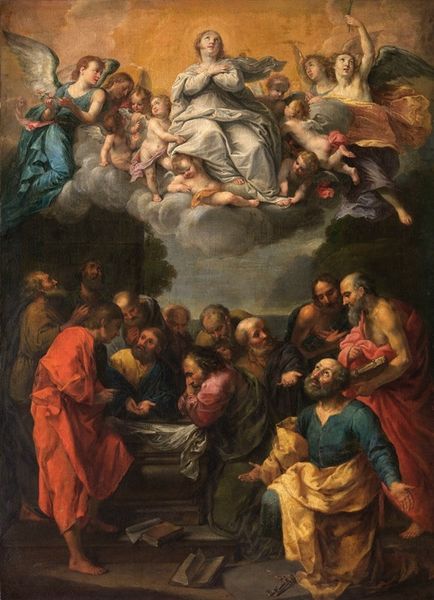
#
baroque
#
figuration
#
oil painting
#
group-portraits
#
christianity
#
history-painting
#
italian-renaissance
#
virgin-mary
#
christ
Dimensions: 155 x 245 cm
Copyright: Public domain
Curator: Here we see Annibale Carracci's "Assumption of the Virgin Mary," completed around 1601. Editor: Immediately, the dynamism grabs me. It's not just the subject matter, but the way he has portrayed this miracle with all this billowing fabric. You can almost feel the movement upwards! Curator: Carracci painted this during a time of great religious and artistic debate. The Catholic Church, in response to the Reformation, heavily promoted images that affirmed its doctrines. The Assumption, the bodily ascent of Mary into Heaven, was a key theme. This piece acted as powerful propaganda, really. Editor: I’m particularly drawn to the craftsmanship of the robes, though. The weight and texture achieved through the oil paint, the interplay of light and shadow—it speaks volumes about the value placed on these materials, their cost, and who could access such displays of skill. How much were Carracci's patrons concerned with appearances? Curator: Patronage played a vital role. Carracci was commissioned to create something that conveyed not only religious devotion, but also the patron's prestige. The grand scale, the rich colors... it all served a purpose in bolstering their image and associating them with the divine. Editor: But consider also the labor involved: grinding pigments, layering glazes… and for what? Ultimately, to perpetuate power structures by rendering the mystical tangible, marketable, ownable! Look at those vibrant reds and blues, produced from valuable pigments—where did those materials come from? How were they sourced and who suffered in their acquisition? Curator: You’re right; it definitely reflects an investment, both materially and ideologically. Though I also feel some connection with its powerful spirituality. The figures gazing upward with such intense emotion create a tangible feeling. It taps into fundamental human yearnings for something beyond ourselves. Editor: Perhaps. Still, for me, the artwork is fundamentally about earthly concerns disguised as divine occurrences: wealth, status, the controlled representation of a miracle, down to the specific pigments selected. Curator: An interesting, somewhat sobering view. I come away, however, contemplating the work’s ability to negotiate spiritual yearning within its historical framework, whereas your focus underscores the socio-economic factors that propelled its creation. Editor: Exactly! I hope this lens lets visitors think critically not just about what they’re seeing, but also *how* and *why* it was brought into existence.
Comments
No comments
Be the first to comment and join the conversation on the ultimate creative platform.
